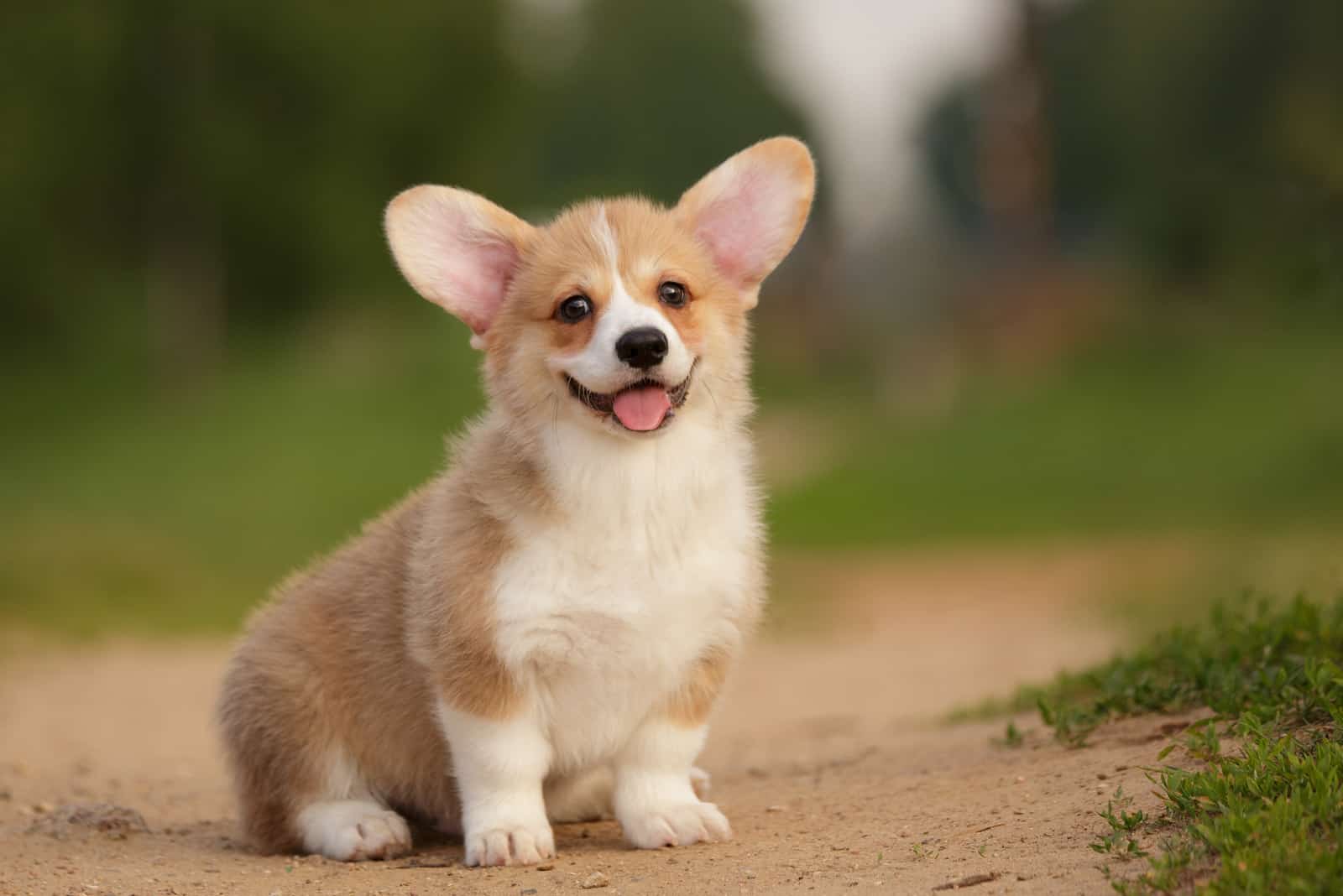Getting a Corgi puppy is both an exciting and stressful experience. Although it’s a medium size dog, you may be concerned about how quickly your Corgi puppy will grow. Good news is that it’s not going to grow as quickly as large dog breeds do. However, its needs will change as the time goes by, and you will have to get accustomed to that.
The Corgi is a short, long, and fluffy dog. It is intelligent, loyal, and obedient (to some extent). Overall, a Corgi is a fun pet to have. Its friendly demeanor mixed with high energy levels make it a challenging choice for first-time dog owners. Despite its challenging personality, this herding dog is among the most popular dog breeds in the United States.
Like all dog breeds, Corgis go through a lot of changes as they grow, although they do not grow very tall. This article is going to describe all different growth stages of our loving shortie — the Corgi!
Let’s not get confused here. There are two types of Welsh Corgis: the Pembroke Welsh Corgi and the Cardigan Welsh Corgi. Even though they share many similar physical traits, they are two different dog breeds. Most differences lie in their markings and tails — Pembroke Welsh Corgis are bobbed tailed dogs.
This Corgi growth chart demonstrates different growth stages, as well as estimated measurements of Corgi’s weight and height. As a bonus, we have included information about the most common Corgi health problems that may affect its growth.
To make this Corgi growth chart, we have focused on the official American Kennel Club’s Corgi breed standards.
Corgi Puppy Growth Chart
When you think about a Corgi puppy, the first thing you probably imagine is how short they are. Certainly their short legs add to their comic-like appearance. But, are you wondering how exactly tall do Corgi puppies get?
[table id=443 /]
This Corgi growth chart shows how tall a Corgi puppy gets within the first two years of its life. Unlike large dog breeds, Corgis are usually fully grown when they reach their first year of age.
The range between these inches refers to male and female Corgis. Usually, male Corgis grow taller than female Corgis. But as you can see, the difference in their height is minimal — an inch or a little over an inch.
Let’s see if there are any major gender differences in the Corgi weight chart.
Corgi Puppy Weight Chart
In theory, Corgi puppies are not heavy dogs. Most of them appear chubby due to their thick coats combined with their short legs. A Corgi’s ideal weight is listed in pounds below.
[table id=444 /]
And just as we thought, the male Corgis are a few pounds heavier than females. This is completely natural. So, if you own Corgi puppies, don’t panic if some of them are smaller and lighter than the others. It’s probably due to gender differences.
However, there are some health problems that are linked to the Corgi puppy’s growth. We will get to those later in this article.
When Do Corgis Stop Growing?
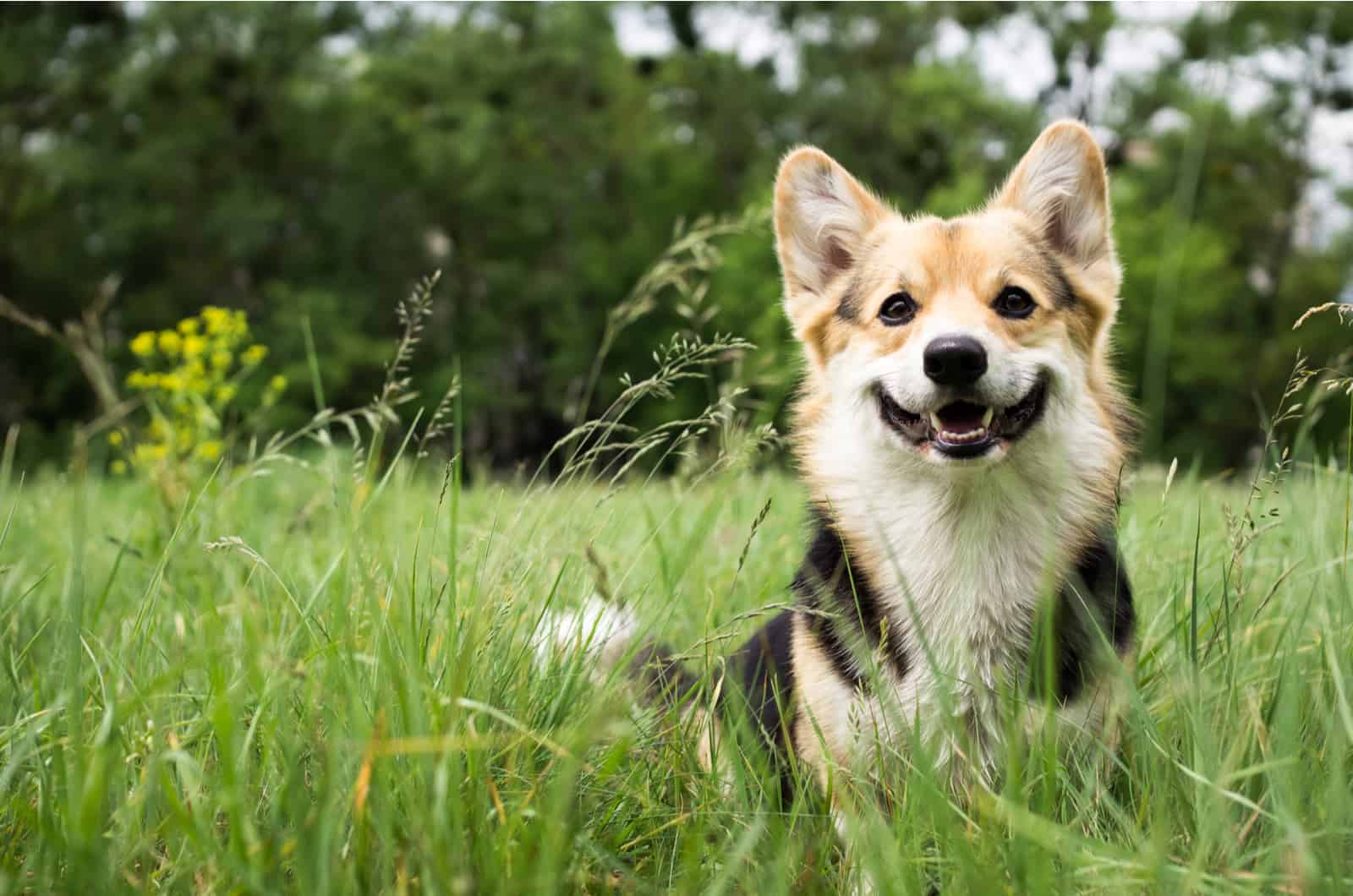
In all honesty, there is no way you can tell when any dog will stop growing. We can only estimate the time it stops to grow.
As Corgi breeders and owners followed their puppy development, they noticed that Corgis usually stop growing when they reach 12 months of age. In other words, when a Corgi puppy reaches its first year birthday, it is recognized as an adult.
However, this growth pattern isn’t always the same. We have to keep in mind that each dog is a unique individual. That being said, each Corgi puppy will have rather different growing stages and it may reach adulthood later in life. If it doesn’t reach adult size within the first year of age, it will continue to grow for the next two or even three years.
Usually, the realest indicator of puppy growth stopping is an X-ray of its bones. During this procedure, a veterinarian checks for visible growth plates inside Corgi’s bones. When these bone plates close, the Corgi has officially reached adult size.
How Quickly Do Corgis Grow?
Corgi puppies do not have as many growth spurts as large dogs. But, there is a point where we see a Corgi puppy suddenly growing fast. This usually happens within the first six months of age.
By the first year of age, most Corgi puppies reach their full adult size. Of course, there are some exceptions. It is normal for some Corgi puppies to be born smaller than the others, just as it is normal for some to be born bigger.
Pembroke Welsh Corgi Puppy Vs. Cardigan Welsh Corgi Puppy
We often refer to the Corgi dog breed as one, but there are two types of Corgis. So, if they are two different dog breeds, don’t they differ in size and weight? Well, technically yes, but not so much.
Both Pembroke Welsh Corgi and Cardigan Welsh Corgi have longer than taller bodies. Something like the Dachshunds, except Corgis are larger and fluffier. Both of them inherit short legs so they cannot reach any extreme heights.
As for their height, there really is not much of a difference. In fact, the only difference is half an inch between these two. For example the Pembroke measures between 10 and 12 inches, while the Cardigan Welsh Corgi stands anywhere between 10.5 and 12.5 inches in height.
Now, here’s the main difference between these two — the weight. The male Pembroke Welsh Corgi’s weight when it reaches adult sizes measures from 30 to 31 pounds, while the female Pembroke Welsh Corgi weighs between 22 and 28 pounds. On the other hand, the female Cardigan Welsh Corgi weighs between 28 and 30 pounds, while males reach up to 38 pounds.
The only exception here is if any of these two Corgi breeds suffers from health problems. Underweight Corgis weigh drastically less than these measurements. In contrast to that, Corgis that are suffering from obesity may weigh twice as much as their normal adult weight.
Male Corgis Vs. Female Corgis
Another thing that I would like to address is that it seems that male Corgi puppies tend to grow faster than female Corgis. Although this is not proven, I believe that they appear to grow faster due to their bulkier physical traits. Most male Corgis inherit strong bones and heavier muscle mass.
Male Corgis are also stockier than females. But, as years go by, female Corgis tend to get more heavy-looking, while male Corgis seem to be taller and skinnier. It really depends on each dog itself. If a female Corgi puppy naturally has a bigger appetite, of course she will be heavier than her male counterpart!
Despite health problems, an exception between Corgi male and female weight is when a female Corgi becomes pregnant. A female Corgi may carry up to eight puppies in one litter. So, you can only imagine how heavy she gets during her last days of gestation.
Although this is a Corgi growth chart, I would like to mention that there are differences in male and female Corgi personalities. I mean, there is no correct growth chart without mental growth.
That being said, female Corgis tend to mentally grow faster. They simply mature faster and act more independent than males. But, that doesn’t make them harder to train. Both male and female Corgis are incredibly intelligent little dogs.
How Long Do Corgis Get?
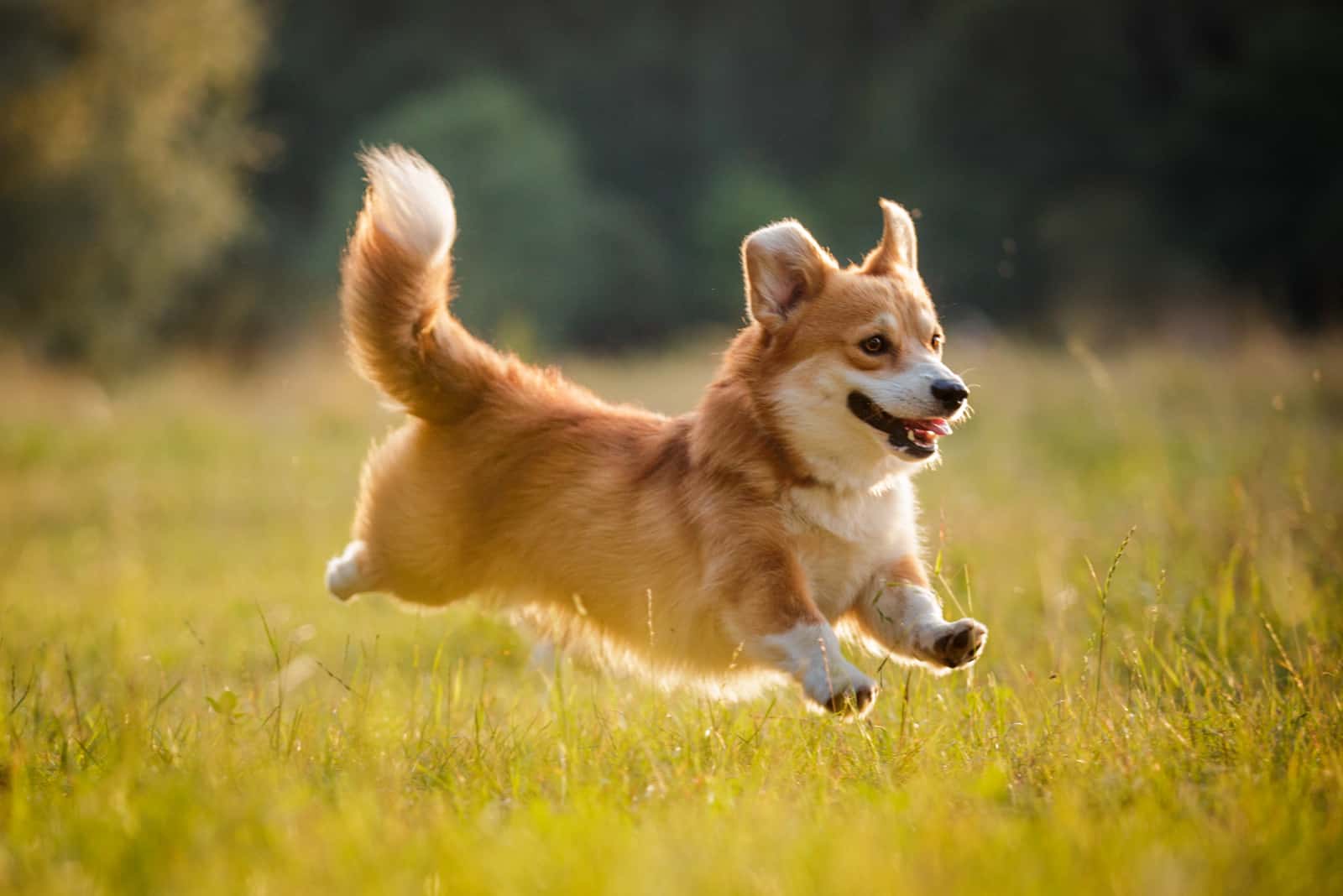
Now that we have mentioned that Corgis are in fact longer than they are taller, we might as well put out the Corgi body dimensions.
So, their height is measured from paws to withers. But, a Corgi’s length is measured from the top of its nose to the top of its tail. Therefore, an adult size Corgi dog is between 22” and 26” long.
In case you notice that your Corgi doesn’t fall under these measurements, there is a chance that you own a Corgi mixed breed dog.
Corgi Puppy Developmental Stages
We have come to the fun part — the puppy developmental stages in which we say a few words about different Corgi puppy growth periods. This Corgi puppy development timeline is great for new puppy owners who are curious about what happens each week during the first year of the puppy’s life.
Birth To Two Weeks
Corgi puppy birth is one of the cutest experiences! If you ever got the chance to see baby Corgi puppies, you definitely know what I’m talking about. When Corgi puppies are born, they usually weigh 2.0 to 2.5 ounces. That’s pretty small, right?
Well, it’s also natural because each Corgi puppy must fit into the Corgi mother’s stomach. But these little herding dogs don’t stay small for too long. Within the first two weeks of age, Corgi puppies are very dependent on their mother.
They are nursing, napping, yawning, crying, and mostly cuddling. The Corgi mom is in charge of keeping them well-fed and clean. There is no visible weight gain in the first two weeks of age.
Two Weeks To Ten Weeks
This Corgi puppy development period is when the party starts! Three weeks of age still marks the “passive period” in their development. However, you can see some puppies are already trying to move on their own. They are becoming more active as their senses slowly start to sharpen.
Since there are many puppies in the litter, most of them will try to fight for the mother’s teat. And some puppies will whine and cry if they don’t have it their way! Ugh, such crybabies!
At four to five weeks of age, Corgi puppies have developed all of their senses. They can see well, and smell even better. This only means that it is time for adventure! The period between four and six weeks is when Corgi puppies start to play more with one another.
They are also trying to figure out what goes on around the house. During this period, foxy-looking Corgi puppies will try to waddle away from their crate. These puppies are simply curious about what’s around them. Oh and also, their teeth started emerging, so you better prepare some quality chew toys!
Ten Weeks to Four Months
As their teeth grow, the mother Corgi decides to put an end to breastfeeding. So, this period is when puppies usually switch to puppy food. And, most Corgi puppies are adopted when they are eight weeks old.
The transition from mother’s milk to puppy food should start slow and steady. No sudden and drastic change should happen. Most Corgi owners and breeders usually start by adding water to puppy food. This helps the Corgi’s digestive system get used to less concentrated puppy food.
By four months of age, a Corgi puppy weighs between 11 and 16 pounds. This is almost half of its adult weight. With each upcoming month, you can expect your Corgi puppy to gain between four and five pounds.
This period is great for puppy socialization and training. You can even start earlier, since Corgis are very active and eager to learn puppies.
Four Months To Six Months
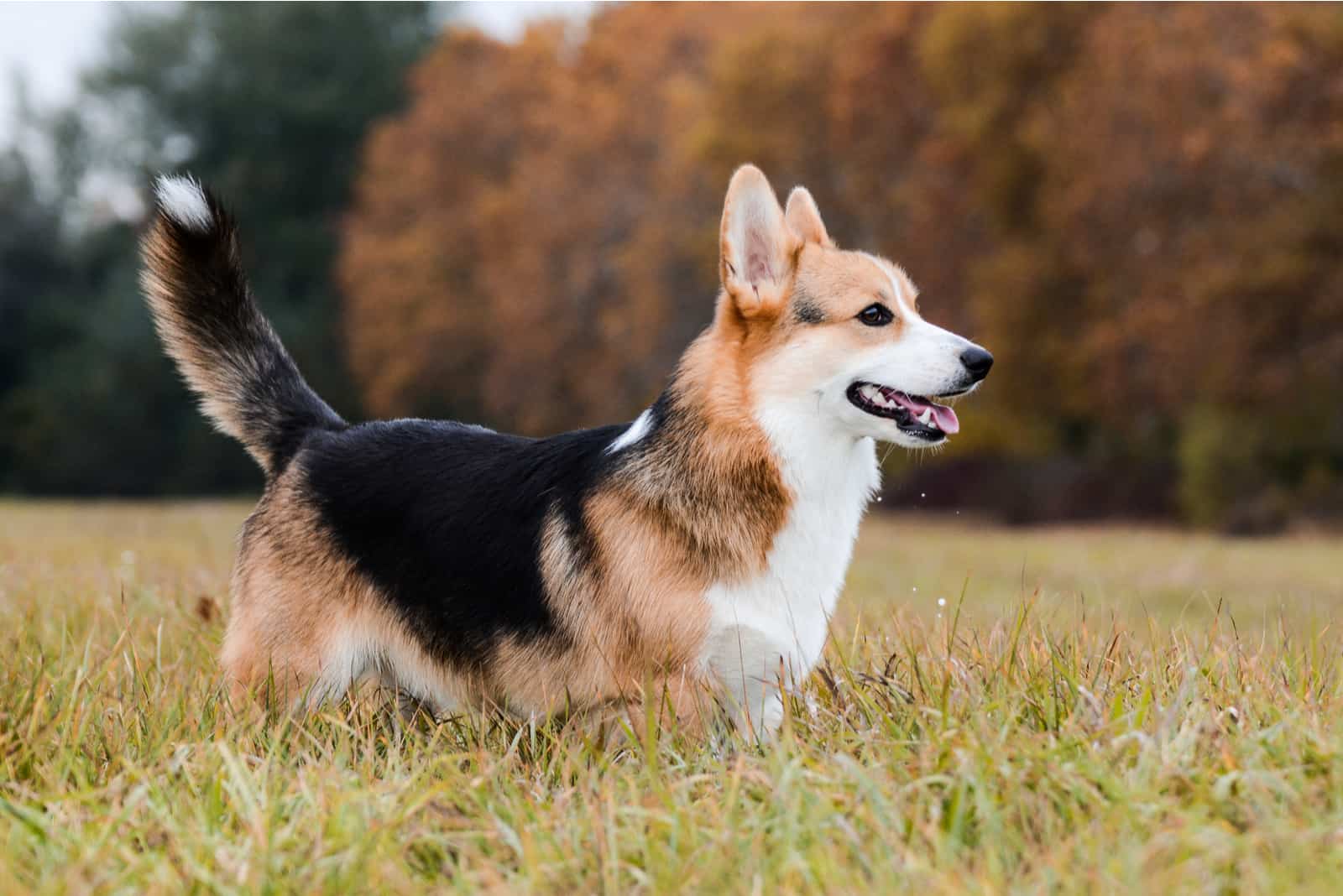
At six months of age, a Corgi puppy weighs between 17 – 23 pounds. This period marks halfway to its adult size. So, instead of gaining five pounds with each upcoming month, the six month old Corgi puppy will gain two to three pounds until it reaches its adult size (usually at twelve months of age). If you thought that the teething period is over, you are very wrong.
The Corgi puppy has acquired a new set of teeth — now it has its permanent big boy teeth! So this may be the best time to buy a new set of Corgi dog toys. And by this time your Corgi puppy should be well socialized and trained.
By trained I mean that it should know the basic commands and manners. Keep in mind that during this period all Corgi puppies are extremely energetic. In fact, they are so active that they sometimes forget that you exist! No, seriously, Corgis tend to be a bit stubborn and independent. But, let them know that you’re there by indulging into quality playtime.
Six Months To Ten Months
The period between six and ten months of age is usually when Corgi owners ask themselves “why on earth did I get this dog?” Now everyone has got their hands full trying to follow a hyperactive Corgi puppy!
No wonder why Corgis are suitable for active people. If you can follow a seven-month old adolescent Corgi puppy’s rhythm, you can do it all! Between six and ten months of age, Corgis are teenage puppies that are all over the place.
Most of the male dogs show signs that they want to mate, while females tend to wander and act independent.
The Corgi dog breed is very specific and this period of life is crucial for socialization. If you let your Corgi puppy do whatever it wants, its behavior can turn bad real quick.
Although Corgis aren’t usually labeled as aggressive, there is a high bite incidence recorded with this breed. So, make sure to go through a diligent socialization process with your Corgi puppy.
Ten Months To Twelve Months
We’re a little close to reaching adulthood. Most ten month old Corgi dogs still behave as adolescent dogs. However, when they reach twelve months of age, Corgis are considered as adult dogs. They also reach sexual maturity by the first year of age.
Most Corgi owners decide on neutering or spaying their one year old Corgis, although these procedures may be done as early as six and nine months of age.
Over A Year
Once it reaches twelve months of age, you have to make sure that your Corgi puppy gets enough exercise. A one year old Corgi dog is still very young, and has not stopped growing.
However, it should still remain as active as it was. Just make sure not to overdo the exercise. There should be a balance between a healthy diet and regular exercise. This way you are making sure that your adult Corgi dog doesn’t acquire any excess weight that may lead to health issues.
Most adult size Corgis start to shed quite a lot. But, this is a breed-specific trait, so it’s quite normal for this herding dog breed.
Is My Corgi Underweight?
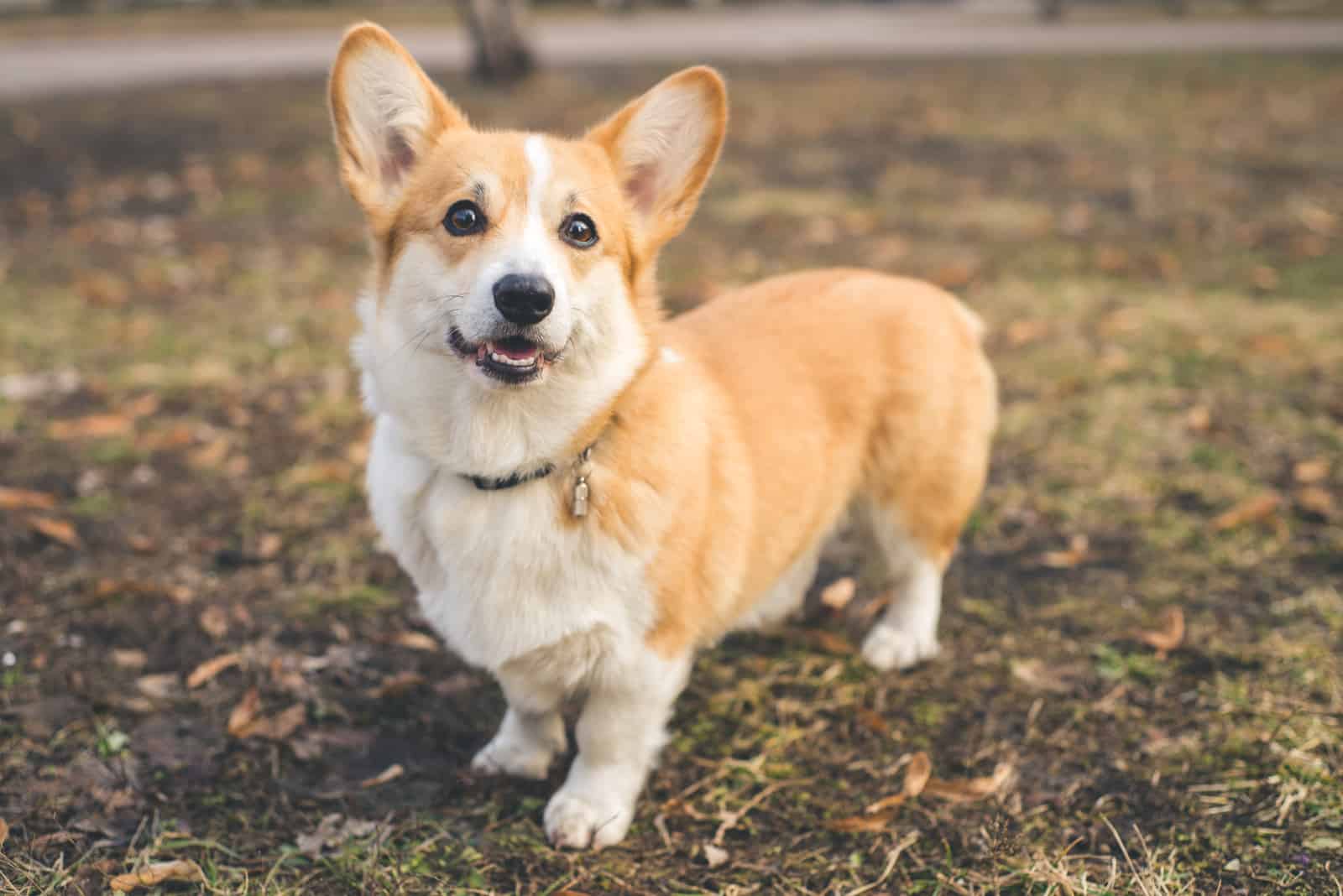
Sometimes, we question ourselves if we are doing everything right, especially when we own a puppy. This question may pop up into every Corgi owner’s head. But, let me tell you when you should worry, and when you should not worry.
Firstly, let’s check how fast our Corgi puppies grow. We see an increase in activity levels between three and seven months of age. During this period, the Corgi puppy is still growing, but it is losing a lot of energy during its zoomies.
Corgi puppy zoomies are sometimes difficult to stop, and the puppy seems to be restless. During this outburst of energy, most Corgi puppies forget to eat. In this situation, you should try to include dog food that your Corgi puppy likes the most.
Treats are great for positive reinforcement, especially if your Corgi puppy finally listens to you. If this happens often, your Corgi puppy might appear skinny. But, as long as its ribs and hip bones are not visible, your puppy is not underweight.
An underweight Corgi puppy won’t show as much energy as a puppy with healthy weight. Not only will an underweight puppy be lethargic and weak, but it will also have a weaker appetite. In this case, you should worry and take your Corgi puppy to the vet.
Factors Affecting The Corgi Puppy’s Growth
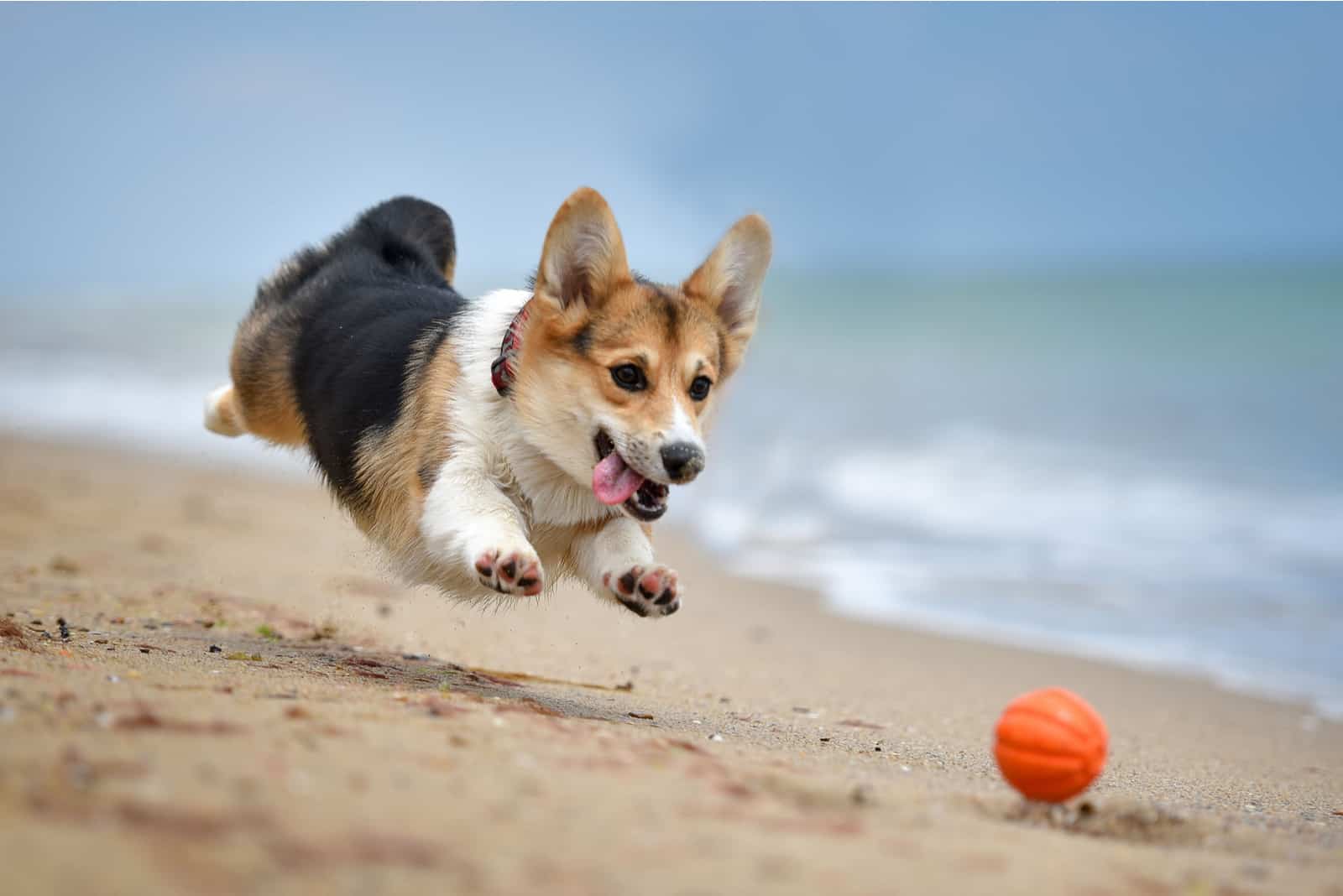
It wouldn’t be a good growth chart if we didn’t include factors that are affecting your Corgi puppy’s development, right? Like all dogs and living creatures, Corgi puppies are under the influence of different growth factors. Let’s see what kind of factors I’m talking about.
Genetics And Environment
In all purebred dogs, genetics plays a crucial role. I always imagine dog breeders as ones who are holding the strings and controlling how the puppies will develop. And it is like that in a way. Most dog breeders rely on genetics in order to produce quality Corgi puppies. Those who don’t establish quality breeding programs often produce unhealthy puppies.
A diverse gene pool is in one hand a guarantee for good health. Good gene picture ensures quality characteristics and predispositions. As for Corgis, their genes have been passed from old Welsh herding dogs, so they have inherited herding dog personalities. Their size however, remained short and compact. This genetic trait has unfortunately led to the development of some health issues.
Environmental factors such as humidity, light, oxygenation, and temperature are perhaps the most important ones. There is simply no life without them. All creatures who are raised under the proper environmental factors have more chances of normal development.
Proper Diet And Nutrition
All dogs love to eat, and Corgis are no exception. Actually, Corgis love to eat so much that they are prone to obesity. That is of course if they are overeating and not getting enough exercise.
As a growth factor, proper diet is important for each stage of Corgi puppy development. From the first day of its life, all up to its last. When Corgi puppies are born, they nurse until their teeth start to grow and they start to become independent.
Now, if it wasn’t for you, puppies in the wild would hunt for food. But, luckily, we have spoiled our domesticated canines by buying them high-quality dog food. And, there’s nothing wrong with that. As long as our dogs are getting enough nutrients from food, we don’t have to worry about any developmental issues.
However, when getting a Corgi puppy one must know the health problems it is prone to. In accordance with that, all Corgi owners must choose the right diet for their lovely herding dog. Corgis require a nutritional diet that is packed with protein, healthy fats, carbohydrates, and vitamins.
These nutrients are like honey to the bee, like water to a plant, like… umm gas to the engine! And well, Corgi’s high energy body engine requires all the nutrients it can get. As much calories it takes in, I believe it takes out twice as much during its zoomie sessions.
Take a look at our Corgi feeding chart for more information on this dog’s nutritional needs.
Physical And Mental Activity
Exercise, exercise, and exercise! This is what a Corgi puppy needs on a daily basis.
In order to grow into a big dog, I mean, a medium, short dog, the Corgi requires plenty of exercise. Maybe you weren’t aware of this, but Corgi’s short legs are made for running. And it will show you its running skills as soon as it learns how to walk.
Physical activity in Corgis builds muscle mass and strengthens the bone tissue. It is also linked with mental wellbeing. Most Corgis tend to get aggressive, destructive, and restless when they are bored. Here you can see the link between physical and mental activity. As long as they have something to do, Corgis will behave nicely and grow into well-mannered dogs
Moreover, the Corgi dog’s weight is greatly under the influence of exercise. There must be a proper balance between calorie intake and outtake.
Corgi Health Problems
Unfortunately, we had to get to this point. Although reading about your favorite dog breed’s health problems may be discouraging on your path of getting a new puppy, it is best to look at it as something positive and educational. By knowing the Corgi’s health problems, we are able to help prevent them from developing.
Most common Corgi breed-specific health problems include hip dysplasia, Von Willebrand Disease, Intervertebral Disc Disease, eye conditions, and obesity.
Hip Dysplasia
Some health issues that are linked to the Corgi puppy growth usually include bone problems. So, hip dysplasia is often an issue because of the Corgis short legs and heavy bodies. I mean, its short legs tend to get tired of the heavy weight, especially if the dog is overweight.
Hip dysplasia is referred to inadequate joint development in which adhering bones rub against each other during movement. This is extremely painful for the dog and requires veterinarian care. It is mostly a developmental issue that is rooted into almost every dog breed’s genes.
Obesity
Both Pembroke Welsh Corgis and Cardigan Welsh Corgis are prone to obesity. It’s usually the small and medium-sized dogs with short legs that are prone to obesity. However, there is no exact rule to what dog breeds are more susceptible to developing this disease.
If you are keeping track of your Corgis everyday diet, you won’t have any reason to panic. A healthy Corgi will have gotten used to its feeding schedule. However, an unhealthy and obese Corgi will have different eating patterns and needs. It’s mostly the owner’s fault when a dog develops obesity.
Some dog owners even think that chubby dogs are cute. I mean, all dogs are cute no matter what, but obesity is a disease that carries many other health issues with it. And I don’t think there’s anything cute about that.
Corgi’s thick coat might mask the appearance of excess weight. That is something you should not be easily fooled with. To make sure your Corgi is in great shape, keep track of its weight and feeding schedule, and everything will be hunky dory!
What Is The Life Expectancy Of A Corgi?
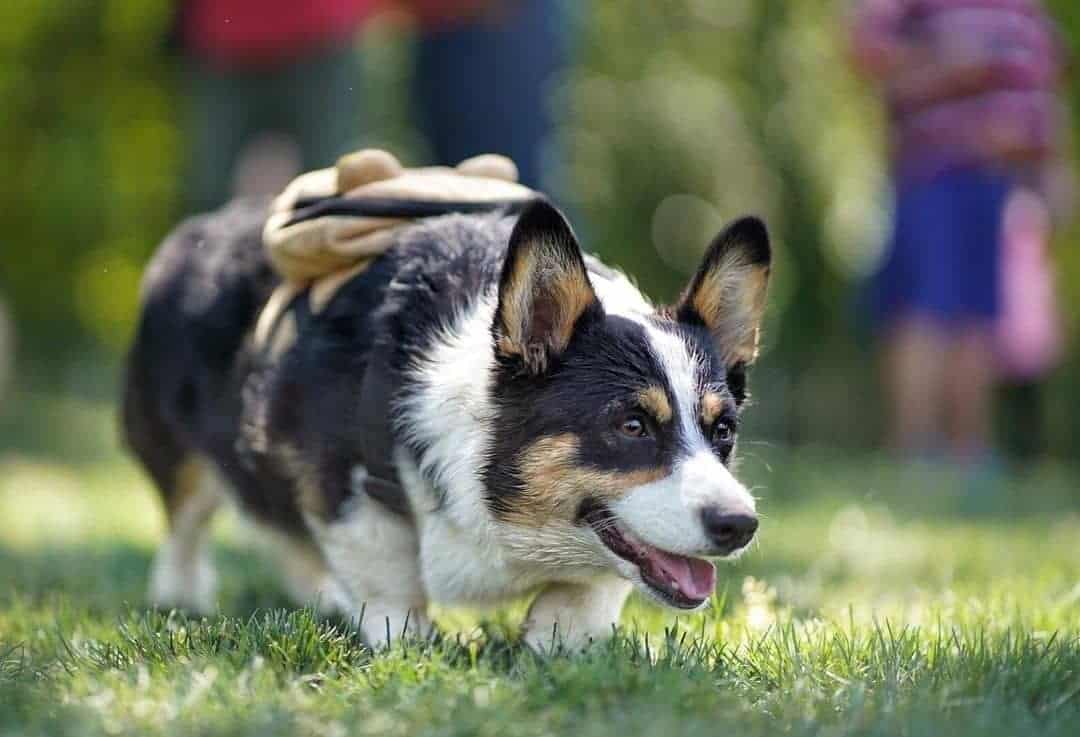
A great deal of health issues may have an effect on the Corgi’s lifespan. However, not all Corgi puppies inherit breed-specific health problems.
Healthy Corgi puppies that derive from reputable Corgi breeders usually live up to fifteen years of age. On average, Corgis lifespan is anywhere between 12 and 15 years of age.
With proper care, love, and dedication, a Corgi puppy may live beyond the average life expectancy range. When you are getting a new puppy, you have to keep this in mind. As a responsible Corgi owner, you are in charge of providing your puppy with everything it needs on a daily basis. Make sure to have its needs met in order to extend its longevity.
Final Thoughts
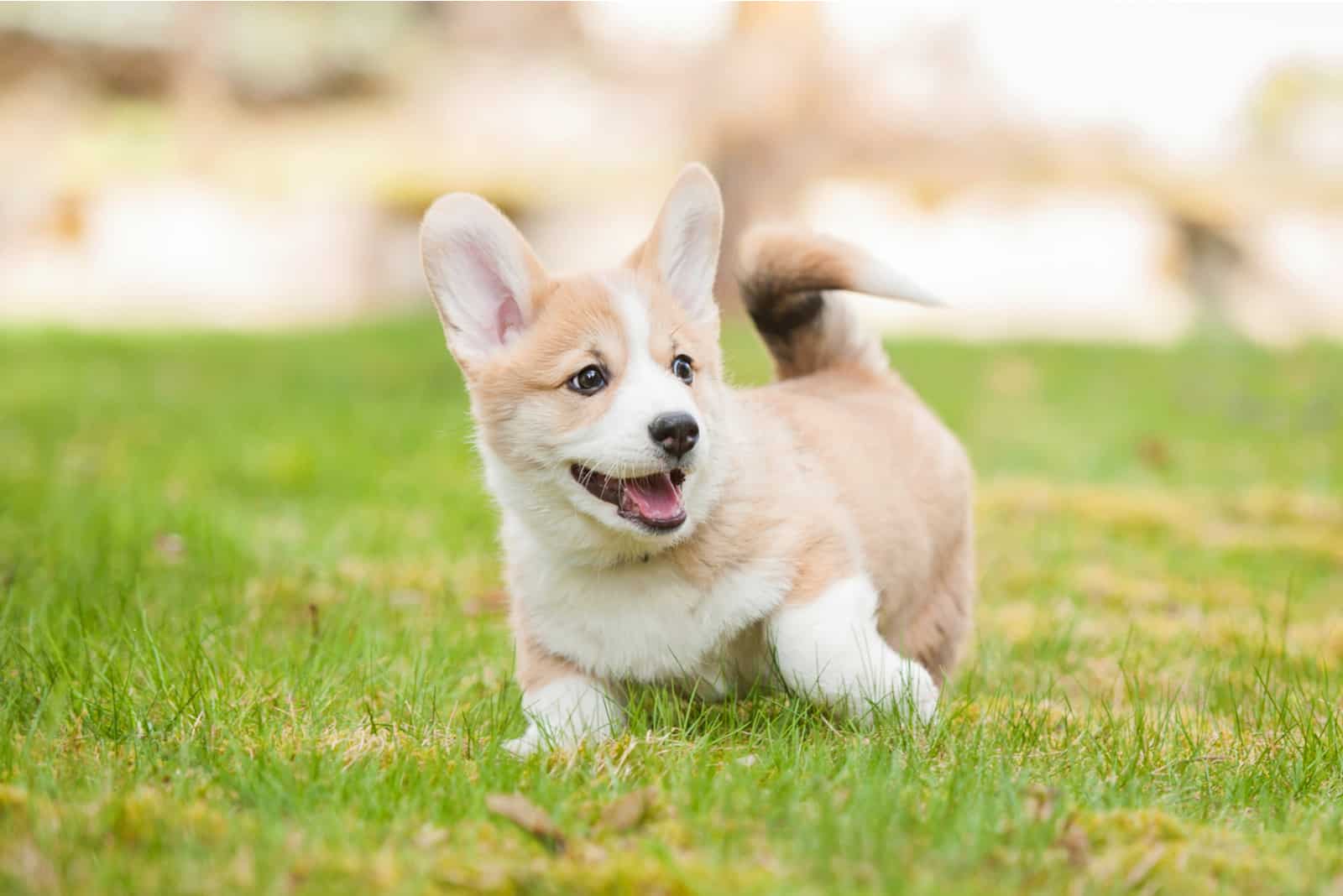
Corgi puppies are one of the cutest and the most popular dogs in the United States. But, they are not only popular in the U.S.! These herding dogs made their way to Queen Elizabeth’s heart! We might as well say that this dwarf herding dog is in fact a royal companion.
Whether you are looking for a lap dog, a herding dog, a working dog, or a companion dog, you will most likely find everything in a Corgi dog. But, only if you properly socialize this little furball.
Corgis are generally sweet dogs, some of them get along well with children, while some should not be left unsupervised. You might find that many shelter Corgis have a bite history and aggressive behavioral traits. But, don’t let this discourage you from getting a Corgi puppy yourself.
It takes a lot of patience with this dog breed. What contributes the most to a healthy Corgi puppy development is its upbringing and your dedication to it. A Corgi will require a lot of attention during each of its growth stages.
For you to understand this dog breed better, you can rely on the Corgi growth chart. This guide isn’t just about numbers and values, but it is about getting to know this wonderful herding dog breed.
We hope that you learned something new about these dogs and that you are ready to start your Corgi puppy journey!
Related Content
• Beagle Growth Chart: Everything You Need To Know Before Buying
